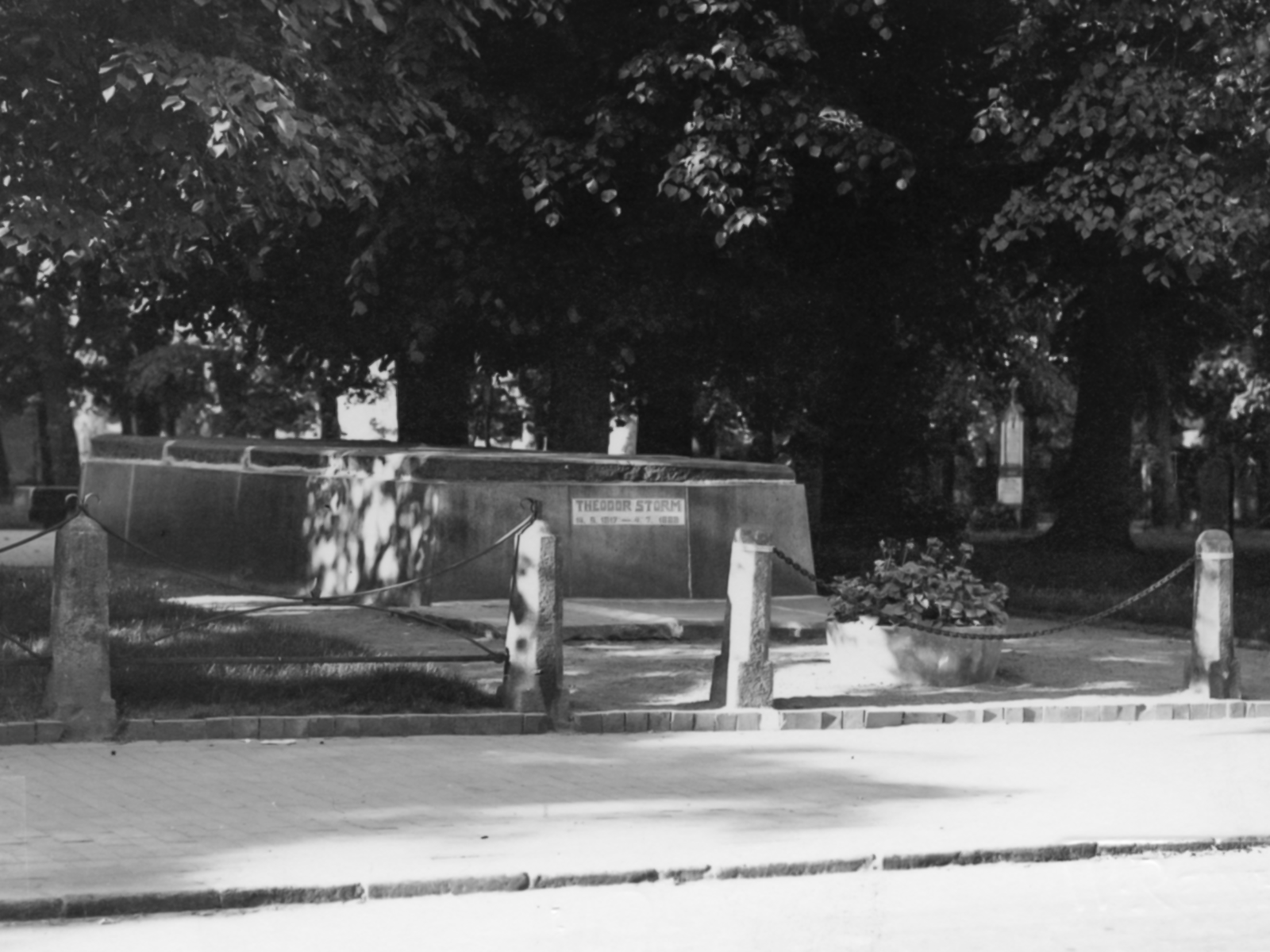Storm-Woldsen grave
Theodor Storm died July 4, 1888 in his house in Hademarschen (Holstein). The burial took place three days later in Husum, in the St. Jürgen cemetery in the east of the city; in the beginning of the 19th century, Storm’s great-grandfather Friedrich Woldsen († 1811) had a crypt built here. It was initially intended to hold coffins from Woldsen’s hereditary burial site in the St. Marien Church in Husum; this had to be given up when the church was demolished in 1807/08.
The tomb in the St. Jürgen cemetery contains a 3.20-meter-high chamber, the above-ground part of the crypt is encased by granite slabs; on them are four sandstone tombstones taken from the old St. Marien Church.
36 members of the immediate and extended family are buried in the crypt. On May 24, 1865, Storm’s first wife Constanze, née Esmarch, found her final resting place here. Storm wrote to Eduard Mörike on June 3, 1865: “After I put her [...] into her coffin myself with the help of friends, she [...] was carried to our family crypt by the members of my choral society; when the curious city woke up, I had already buried all my luck.” Storm’s second wife Dorothea, née Jensen († 1903), is also buried in the Storm-Woldsen crypt.
Theodor Storm’s funeral took place on July 7, 1888 with a large public participation. However, it was not accompanied by a clergyman, this was decided by the family in line with the closing verses of Storm’s poem Ein Sterbender (1863).
The loss of Constanze threw Storm into an existential crisis. “Solitude and the tormenting mystery of death” weighed heavily on him. Storm had turned away from Christianity and the Christian hope for a life beyond; at the same time, he struggles desperately to see his beloved again after death. It was in this situation that the cycle of poems, Tiefe Schatten, was created.
Text by Holger Borzikowsky (1947–2015)
Translation by Bjarne Albertsen



